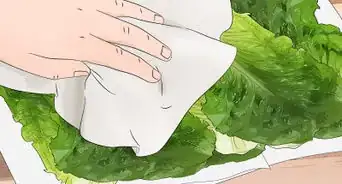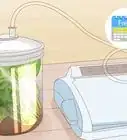This article was co-authored by wikiHow Staff. Our trained team of editors and researchers validate articles for accuracy and comprehensiveness. wikiHow's Content Management Team carefully monitors the work from our editorial staff to ensure that each article is backed by trusted research and meets our high quality standards.
There are 9 references cited in this article, which can be found at the bottom of the page.
The wikiHow Culinary Team also followed the article's instructions and verified that they work.
This article has been viewed 285,138 times.
Learn more...
Salads are a great way to work fresh fruits and veggies into your diet, but it can be difficult to ensure they’ll stay fresh if you make them in advance. If you don’t want to mix your salad right before eating it, make sure your greens are stored in the refrigerator with a paper towel and that your fruit salad is kept fresh with water or citrus juice. No salad will stay fresh indefinitely, but with some simple tricks, you can enjoy yours for up to a week after preparing it.
Steps
Preserving Leafy Green Salads
-
1Chop and wash the lettuce and other leafy greens. Chop off the roots of leaf lettuce and remove the core of the iceberg lettuce. Fill a bowl with cool water and let the leaves soak for about ten minutes, then remove them. If the water appears dirty, pour it down the drain and refill the bowl to repeat the process until the water comes away clean. Rinse the leaves off and lay them on a clean paper towel.[1]
-
2Dry the leaves with a salad spinner. Place the leaves inside the spinner’s strainer basket and put the lid on securely. Run the spinner for 15-20 seconds to remove excess water.Advertisement
-
3Roll your lettuce in a tea towel if you don’t have a salad spinner. Open the towel and spread out the wet leaves on top. Roll up the towel with the leaves inside, pat it gently, and unroll it to remove the dry leaves.[2]
-
4Chop the other ingredients and wash them. Many vegetables, like tomatoes and cucumbers, can be rinsed under running water and dried with clean paper towels. Some, like carrots, may need to be scrubbed with a vegetable brush or peeled with a vegetable peeler to remove any dirt caked into the outer crevices of the skin.
-
5Assemble the salad in a bowl. Place heavier vegetables, like carrots and cucumbers, at the bottom of the bowl, and lay the lettuce and other leafy greens on top. Toss it gently, but don’t put the dressing on the salad, as this will make the leaves limp.
-
6Wait to add dressing until right before you eat the salad. Store any dressing in a separate container in the refrigerator. Adding it too soon will make the leaves limp and soggy.
-
7Place a clean, dry paper towel on top of the bowl. Lay it flat across the top of the leaves, or fold it for a smaller bowl. The towel will absorb water and condensation, keeping the leaves from getting soggy.[3]
-
8Layer paper towels if your salad has veggies with high water content. Take extra measures if your salad has vegetables like tomatoes and cucumbers, which have high water concentration and could make your leaves prematurely soggy. Lay some of your salad in the bowl and lay a paper towel on top. Spread out more salad on top of that and lay another sheet of paper towel over that. You can repeat this for two to four layers, but make sure that a paper towel rests on top.
- Other vegetables with high water content include celery, radishes, zucchini, squash, and bell peppers.[4]
-
9Seal the container with a lid, plastic wrap, or both. Spread a tight layer of plastic cling wrap on top of the bowl to keep the air from getting in and spoiling the leaves. If the bowl has a lid, put that on top of the plastic wrap for an extra layer of protection.
-
10Refrigerate the salad to keep it fresh for a week. Check on the salad every few days and gently stir the leaves around. Replace the paper towel if it’s getting soggy.
Keeping Fruit Salad Fresh
-
1Cut and wash your fruit. Rinse off all the fruit except bananas and chop them into bite-size pieces. Place the cut, washed and dried fruit into a bowl.
- Rinse the rinds of melons like cantaloupe and watermelon and slice off the top and bottom, then cut down the middle and slice the meat of the fruit in squares or with a melon baller.
- Rinse off apples and dry them with a clean paper towel, then slice around the core and cut the rest into cubes or slices.
- Rinse berries thoroughly and lay them out on a paper towel to dry.
- If you’re using bananas, simply peel the banana, lay it flat, and carefully cut it into small circular slices.
-
2Coat the chopped fruit with citrus juice if you’re using oxidizing fruit. Cut up a lemon, lime, pineapple or orange and squeeze the juice into a small, separate bowl. Mix one tablespoon of the citrus juice in one cup of water, then pour it over your fruit and toss.[5]
- Using citrus juice is only necessary if you have fruits that will oxidize. If your fruit salad is composed of only non-oxidizing fruits, like berries, melons, or citrus, an airtight container in the refrigerator should keep it fresh.
-
3Store the fruit in cold water if you don’t have citrus juice. Place the fruit in a plastic bowl, preferably one with a lid, and fill it to the brim with cold water so that the fruit is completely submerged.[6]
-
4Place an airtight-lid on the bowl. Fruit spoils faster than leafy greens thanks to its high water content, so store your fruit salad in a bowl with a lid if possible. Otherwise, stretch plastic cling wrap across the top of the bowl.
-
5Refrigerate the fruit salad for three to five days. Your fruit salad needs to be refrigerated to keep the fruit fresh, even if your bowl doesn’t contain oxidizing fruit. Wait no longer than five days before eating it; after that point, the fruit will have lost much of its freshness.[7]
-
6Drain the fruit salad before serving. Remove the bowl from the refrigerator and pour the fruit into a strainer over the sink if you stored it in water, or scoop it out with a slotted spoon.
-
7Add dressing once you’re ready to serve. Store dressing in a separate container in the refrigerator. Toss it into the salad just before you eat.
Preserving Meat, Egg and Pasta Based Salads
-
1Put the salad in an airtight, sealed container. Many other salads, such as chicken or tuna salad, chicken salad, and pasta salad will have pre-cooked ingredients, so it’s very important to keep the food protected from the air as much as possible. If you can only use plastic cling wrap over your salad, it’s best not to keep it over two or three days.[8]
-
2Store the salad container in the refrigerator as soon as possible. Salads with pre-cooked ingredients will need to be stored in the refrigerator to prevent bacteria from growing or the food from going bad.
- Discard the salad if it was kept outside for more than two hours or has developed an “off” smell, particularly with egg salads or potato salads with a mayonnaise-based dressing.[9]
-
3Store your salad for no more than five days before eating. Many pre-cooked salads contain mayonnaise-based dressings or products which spoil after about five days even when stored in the refrigerator. Determine the ingredients in your salad and keep it no longer than the shelf life of your fastest-spoiling ingredient.[10]
- Non-mayonnaise based pasta salad can be kept fresh for five to seven days.
Things You'll Need
- Salad spinner
- Clean paper towels
- Airtight plastic container
- Tea towel
References
- ↑ http://startcooking.com/washing-lettuce
- ↑ https://www.youtube.com/watch?v=xfVPU3LAm0E&feature=youtu.be&t=42s
- ↑ http://genxfinance.com/how-to-prepare-a-salad-to-last-all-week-for-just-a-few-dollars/
- ↑ https://www.healthaliciousness.com/articles/vegetables-high-in-water.php
- ↑ http://www.webmd.com/food-recipes/features/fruit-salad-magic#3
- ↑ http://www.superhealthykids.com/how-to-prevent-sliced-fruit-from-turning-brown/
- ↑ http://www.stilltasty.com/Fooditems/index/17230
- ↑ http://stilltasty.com/fooditems/index/17132
- ↑ http://stilltasty.com/fooditems/index/17132
About This Article
To keep a salad fresh, first line the sides and bottom of an airtight plastic container with paper towels. Gently blot your salad greens with a dry paper towel to remove any excess moisture, then transfer the salad to the plastic container. Place a paper towel on top of the salad and close the container. Store your salad in the fridge for up to 10 days. To store salad in a sealable plastic bag, first place some paper towels on the counter and pour your salad on top of them. Wrap the paper towels up over the salad, then slide the paper towels and salad into an airtight bag. Press the excess air out and seal the bag. Store it in the fridge for up to 1 week. When making your salad, keep the dressing separate from the greens to make the salad easier to store. If you want to learn how to keep a fruit salad fresh, keep reading the article!
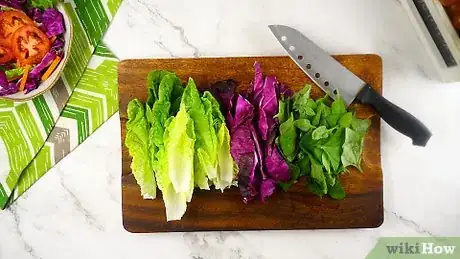
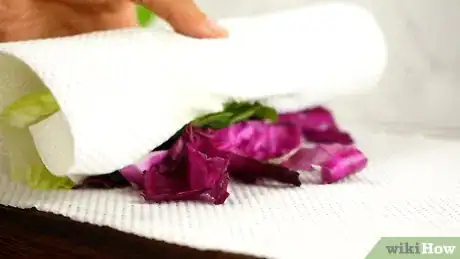
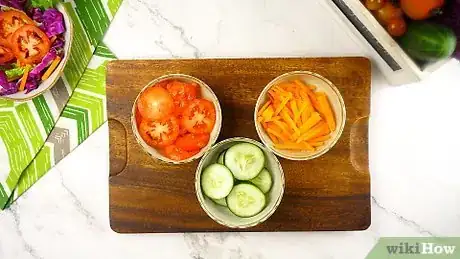
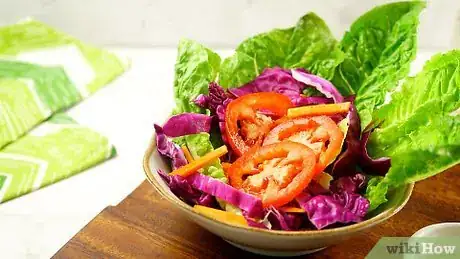
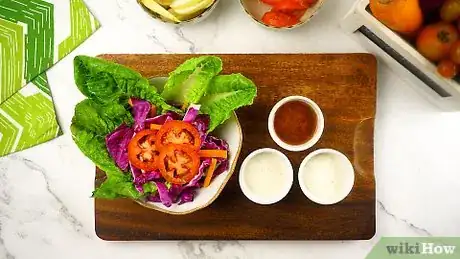
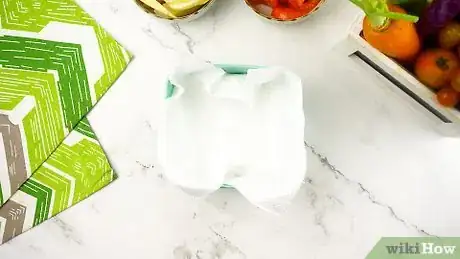
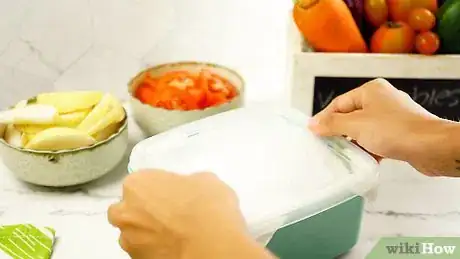
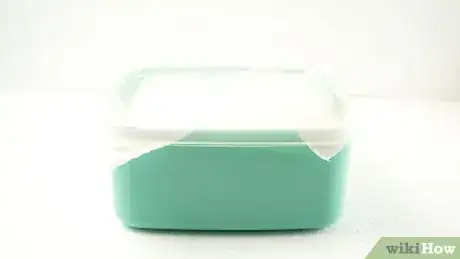
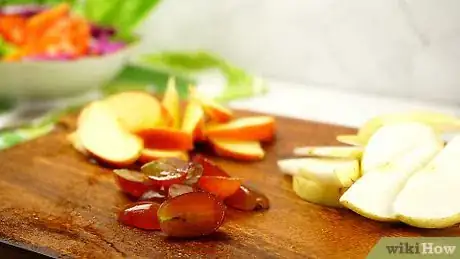
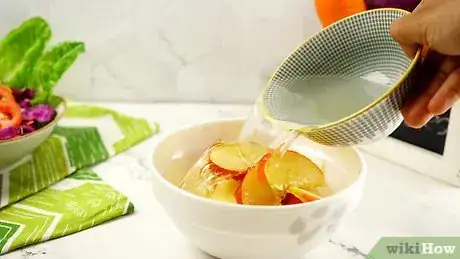
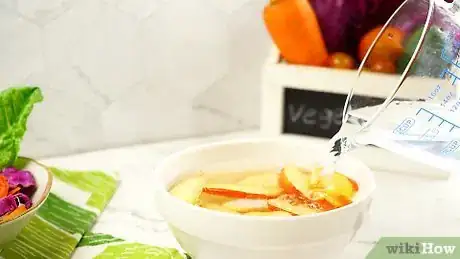
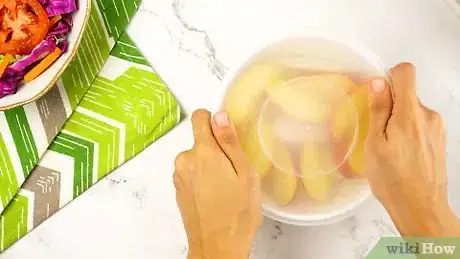
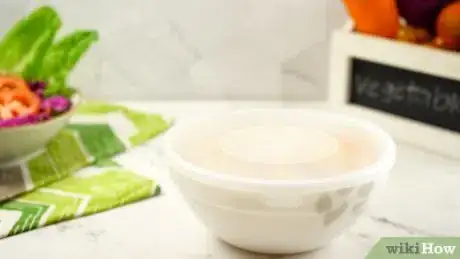
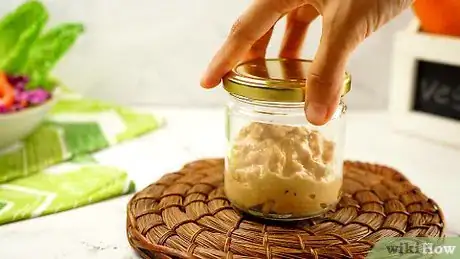
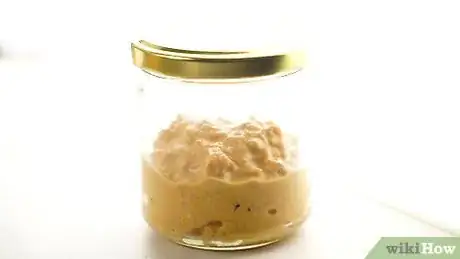

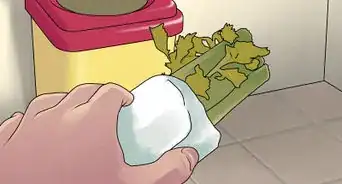
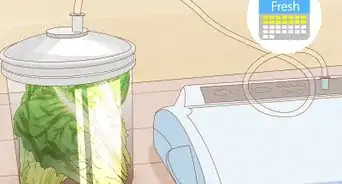
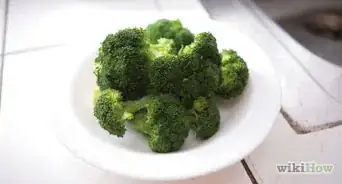



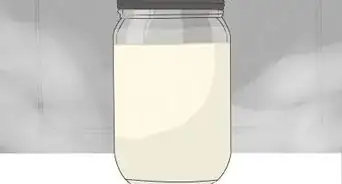
-Step-11.webp)

